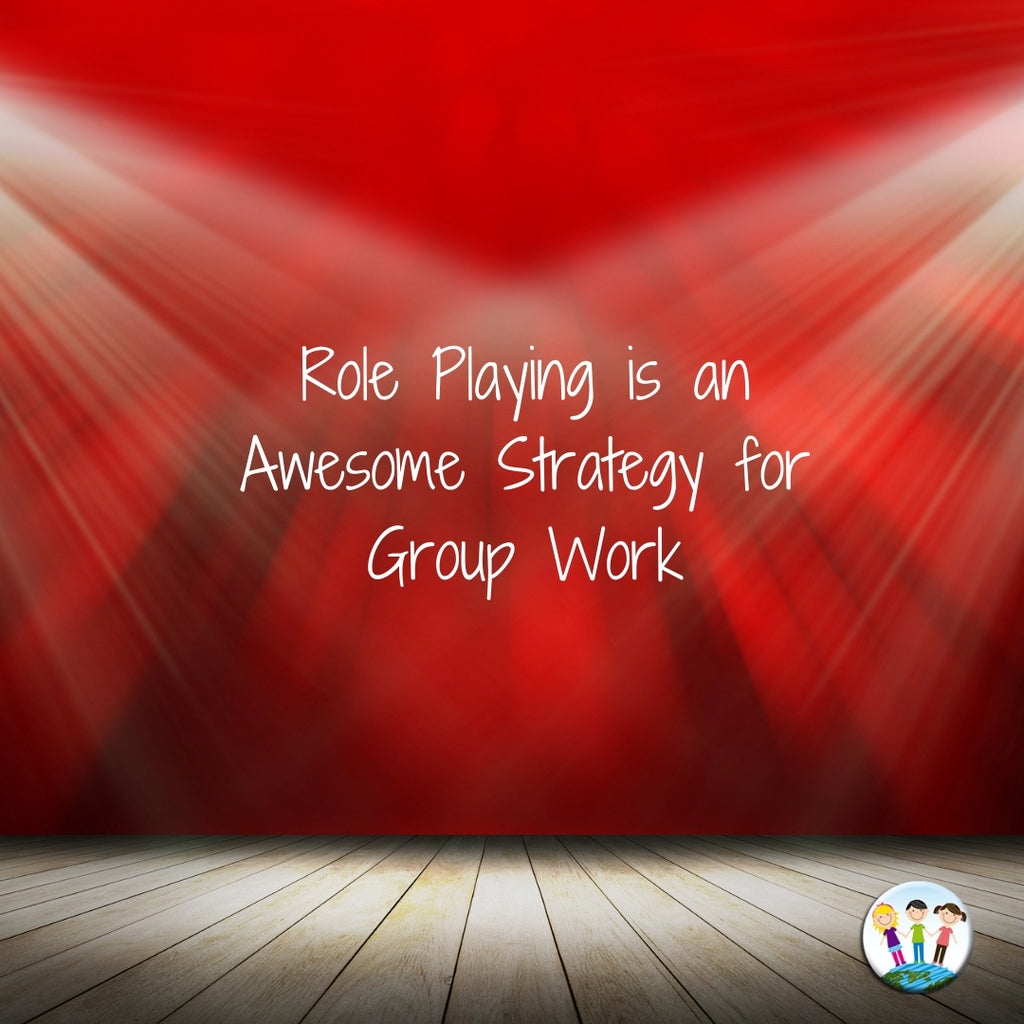Group work is been proven to improve student retention and enhance student learning. In fact, our whole culture is based on team work and working together to solve problems. It makes sense that when people work together (more brainpower) they come up with more ideas, suggestions, and solutions to a problem. But the question remains how do we get children to work together effectively? How do we make sure they are actually working and not talking about what they did last weekend? The answer: We teach them.
The method I have found to be extremely effective is through role playing. Role playing to teach how you expect groups to work together can be a fun yet powerful strategy. Kids loves role playing and what better way to teach such an important life skill as working together. Setting up skit cards for each role is recommended.
First and foremost, we set up structured procedures for group work. We teach the students, model it, and have them practice it over and over until they have it down.
The Task: you want groups to take turns reading an article, stopping after each paragraph to highlight the key ideas. Then using those key ideas to figure out the main idea of each paragraph and then of the entire article.

The Performance:
Prepare the scenario or skit in advance. Set up your student actors and actresses ahead of time
who you know will be charismatic as they perform this important skit. Set up the Skit Cards with what you want them to say.
Scene 1: Have the student actors come up the front of the class so you can introduce each student actor. You might want to give yourself a role (as a student) also. The class will get a kick out of the
performance and you acting as a student. Now, run through the group work scenario. For our specific task it might go something like this:
Read an article out loud, stopping after each paragraph.
Now the acting or role playing begins…
Bob:
“Ok, we read the paragraph so what do you think is the main idea of this paragraph?”
Tamara: “I don’t know.”
Braden: “What did Mrs. Smart say about finding the main idea?”
Marta: “I can’t remember do you?”
Bob: “I think she said to ask ourselves, what is the author trying to tell us?”
Braden: “Oh yeah, that’s right."
Marta: “Then we are supposed to look for key details that support that."
Tamara: “Yeah. So let’s see what do you think the author is trying to tell us in this paragraph?”
Braden: “I’m not sure.”
Tamara: “Maybe we should read it again.”
Bob: “Good idea! I’ll go first.”
Then read the article again and go through the whole process while modeling it for the class. Afterwards, ask the class “What did you notice about what our group just did?”
Have the students come up with strategies or things they noticed that made this group work effectively together. For instance, they took turns reading, they reminded each other how to complete the task, they treated each other nicely, they used their quiet inside voices, they focused on the assignment, everyone had a turn to speak and read, they listened to everyone’s thoughts and ideas, etc.
Quick Steps:
- Set up the Scenario
- Role play to model it
- Practice it
- Give feedback
- Pick the most productive group or best working team
Before we start any group activity, I always tell the class that I’m going to be looking for the most productive group or the group with the best team work. As groups are working and I circulate around the classroom, I look and listen—jotting down notes about what I saw or heard from different groups.
At the end of the activity, I give feedback to all the groups and share my findings. Then I announce which group was the most productive or best working team for the day.
What are the benefits of group work?
Group projects can help students develop a host of skills that are increasingly important in the professional world (Caruso & Woolley, 2008; Mannix & Neale, 2005). Positive group experiences, moreover, have been shown to contribute to student learning, retention and overall success
(Austin, 1997; Tinto, 1998; National Survey of Student Engagement, 2006).
Properly structured, group projects can reinforce skills that are relevant to both group and individual work, including the ability to:
- Break complex tasks into parts and steps
- Obtain deeper understanding through group discussions
- Give and receive feedback on performance
- Develop stronger communication skills
- Learn how to delegate roles and responsibilities
- Share and learn from different perspectives and opinions
- Pool their knowledge and skills
- Receive social support and encouragement to take risks
- Develop a new approach to solving problems or tasks
- Establish a shared identity with other group members.
- Develop their own voice and perspectives in relation to their peers.
early and put the students on the right path. Part of effective group work is learning how to work together to solve a problem, perform a task, or create a project in collaboration with others.

